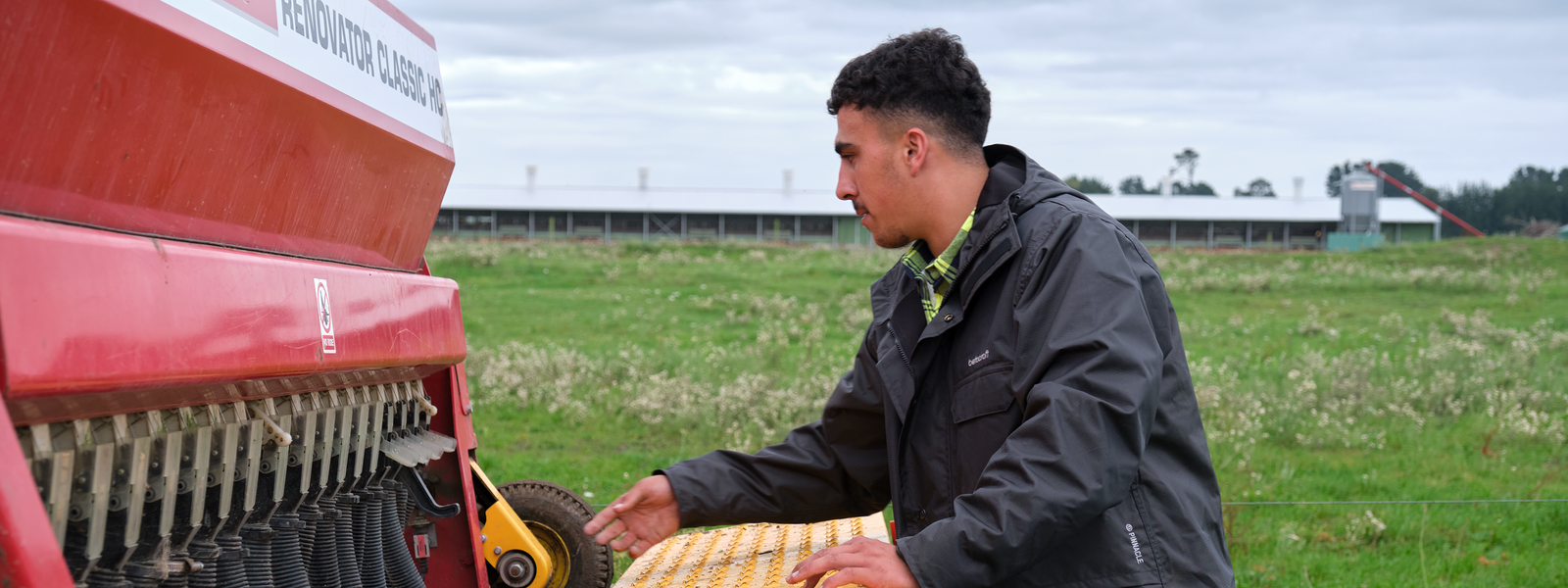Finding it tricky to decide what wet weather gear to go with? We've collated a few features we think are the essentials to consider when buying new wet weather gear this season.
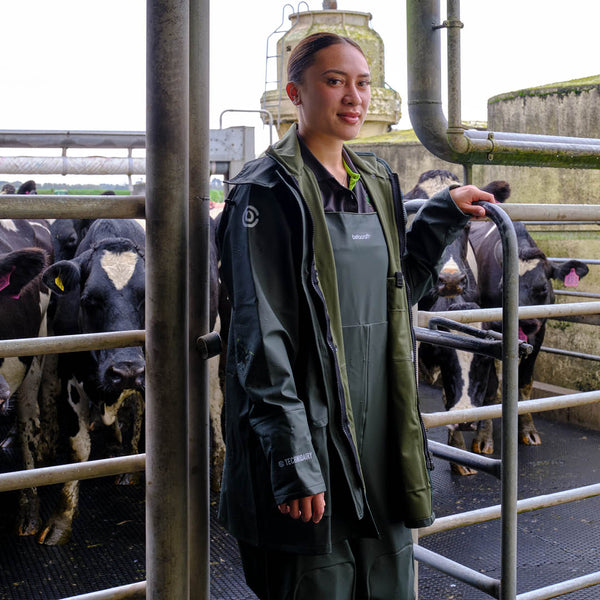
1. Waterproof ratings
The term ‘waterproof’ is so broad and is often mixed up with the terms ‘water-resistant’ or ‘weather-resistant’. We won’t deep dive into the nitty gritty science of waterproofness here, if you’re keen to know more we’ve run through some of the essentials about waterproofness on the waterproofness page.
Primarily, it helps to understand waterhead rating numbers; this measurement determines a garment’s level of waterproofness.
- A rating of 1,500+ mm/m² would be considered water resistant, the kind of jacket that's fine for when there’s a chance of light rain.
- A rating of 5,000-10,000 mm/m² is where it starts to get serious. Think unpredictable weather, and when you leave the house not knowing if you’ll face a calm breeze or a downpour, this is your jacket.
- Anything with a rating over 15,000 mm/m² will have you covered. The kind of garment that's impervious to water, and it ain’t letting anything through, it’s your mid-winter go-to.
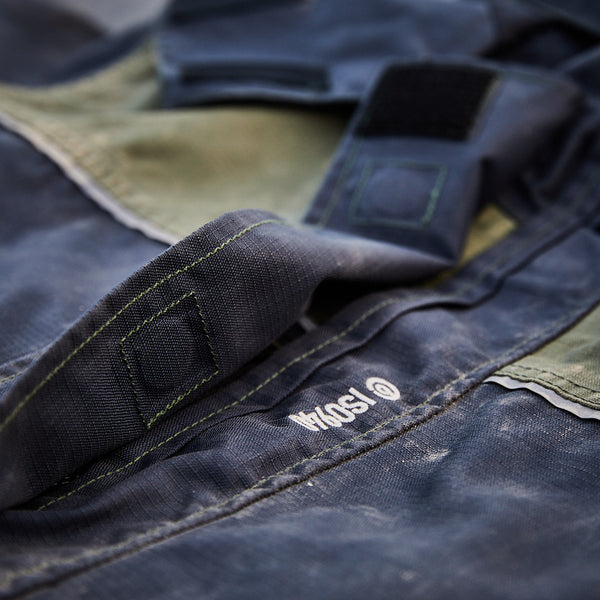
2. BREATHABILITY
There's nothing worse than sweating bullets in a jacket that’s meant to keep you dry, so breathability plays a big part in the overall performance of your gear.
Think of it this way, to keep the rain out, fabric needs to be 100% water sealed. But, to let the sweat out, there needs to be micropores (tiny holes) to let the vapour and body heat escape. Doesn’t add up, does it?
The good news is, with the way technology has evolved, some garments have been cleverly designed to be to be 100% waterproof whilst being breathable due to layering of fabrics and specialised membranes.
We recommend going for a jacket with a breathability rating of at least 5,000gm/m² to stay dry, inside and out.
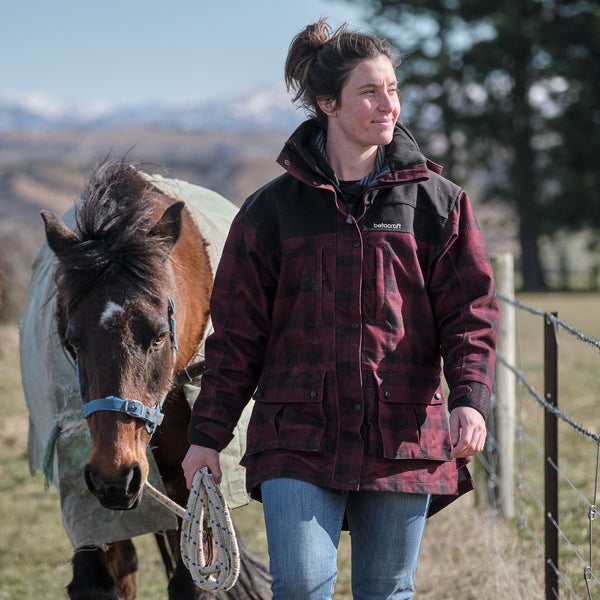
3. FIt
Each person has a unique body shape, meaning how their clothes fit is also personal, varying from one individual to another. So here are a couple of things that our Betacraft team look for when buying or trying on gear.
- The cut: When trying on your gear consider how you move when you are working and what movements you will need to achieve. E.g. climbing a fence, lifting things and bending over or crouching.
- The size: When trying on your wet weather gear we encourage you to consider what you already wear to work. If you prefer a lot of layers underneath then consider going up a size to have enough room for your cosy layers under your waterproof layer.
- How easy is the garment to put on? If it’s too hard to get on or off it ends up not being worth the hassle. Are the zips too fiddly? Is the waistband too tight? Or are the straps on the bibs too long and get tangled easily?
- Fabric feel, there are a lot of factors that contribute to fabric feel and it can vary greatly based on the function of the garment. But if you cringe as soon as you touch the fabric, perhaps it’s noisy or too scratchy, maybe it’s not the product for you.
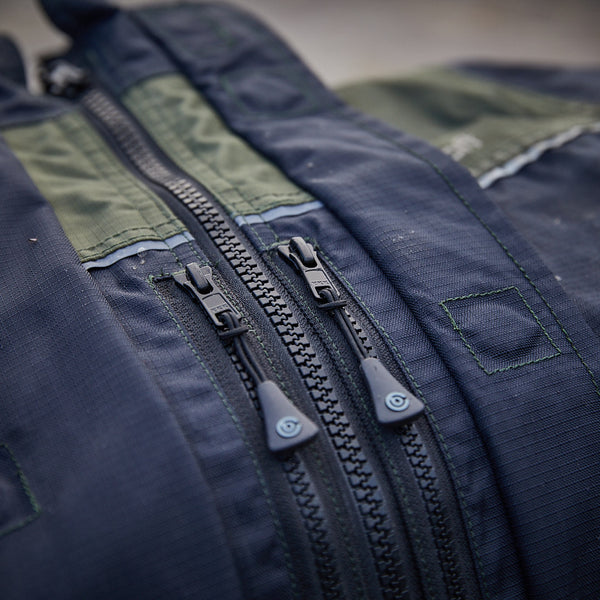
4. POCKETS
Pockets are crucial for any piece of clothing, but here are a few of our top considerations for pockets.
- Can it fit your phone in it?
- Do you want it for hand warming?
- Do you need a zip?
- What else are you storing in your pockets?
- Will the location of the pocket impair your ability to crouch, sit or walk?
- Do you need a waterproof pocket?
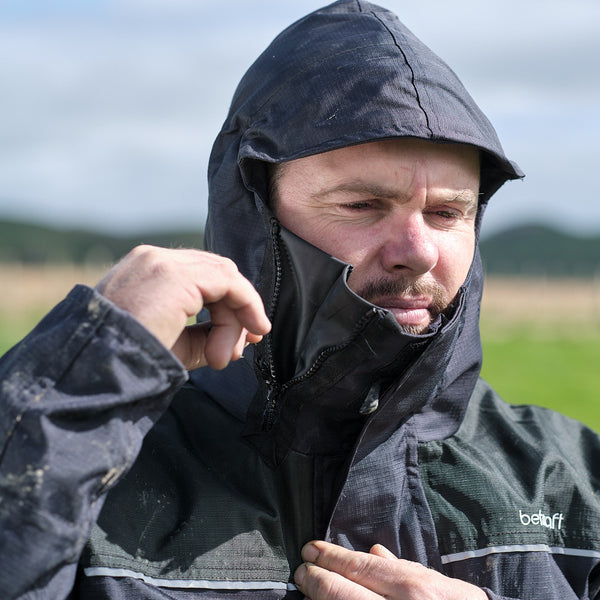
5. HOOD
Some people are hood people, some are not. Whichever category you come under we still suggest trying on the hood to see if:
- It actually fits your head in it
- Does it impair your peripheral vision?
- How easy is it to fasten around your head?
- How does it sit when you’re not actively using it?
- How well does it work with a beanie or a helmet?
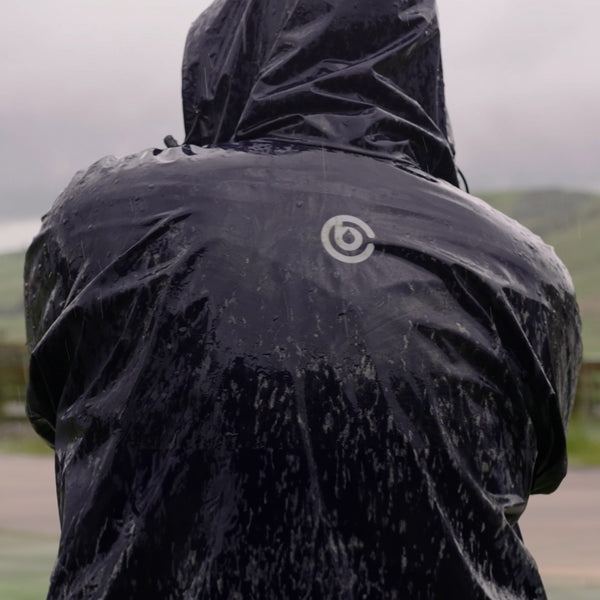
6. EASY TO CARE FOR
Do you have a floor-drobe at your backdoor? Boots, socks and jackets scattered everywhere?
Cleaning down your gear may be the single most important factor to ensuring your gear lasts as long as it should.
Why, you ask? Two main reasons;
1) To ensure your gear is dry for tomorrow.
2) If left wet, bacteria can take up residence in your wet weather gear breaking down the waterproofing and deteriorating the fabric over time.
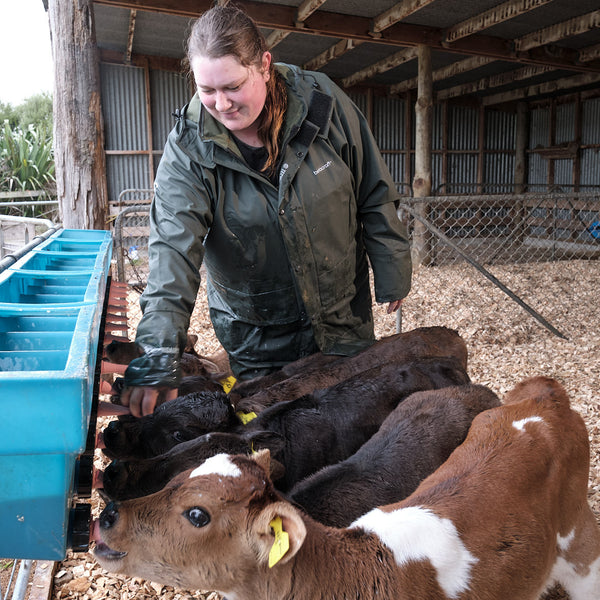
7. LIFE EXPECTANCY
Everyone is seeking value for money. And everyone’s opinion of how long something should last is different. Theoretically the dollar amount you spend reflects the expected lifetime of a product, so keep this in mind while you are shopping.
As well as a couple of other points:
How rough are you on the gear?
How frequently are you wearing it and how well are you going to look after it?
These are all factors to influence how much money you will be willing to spend on your gear.
